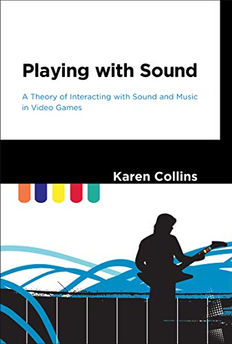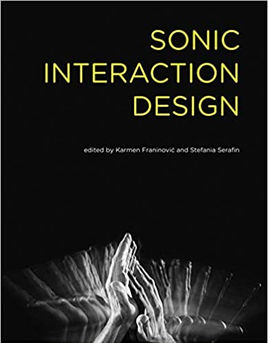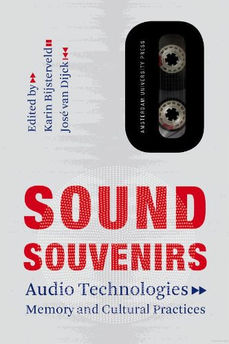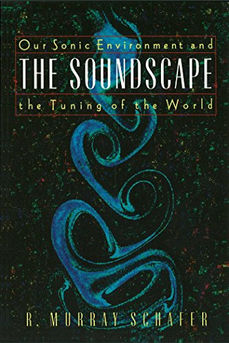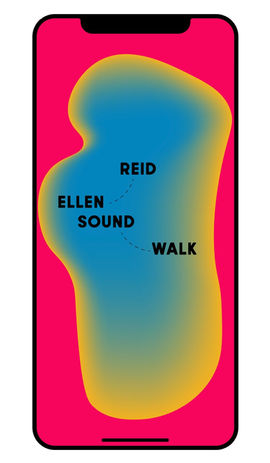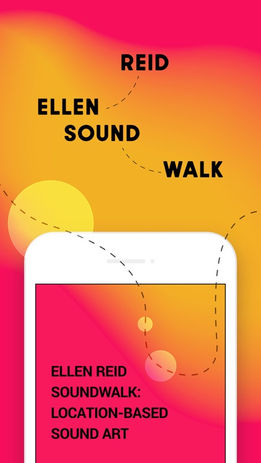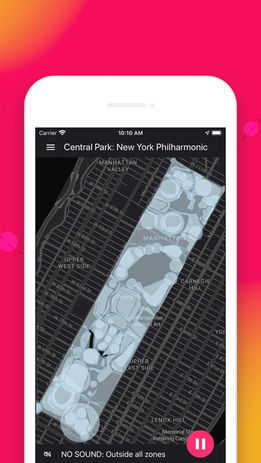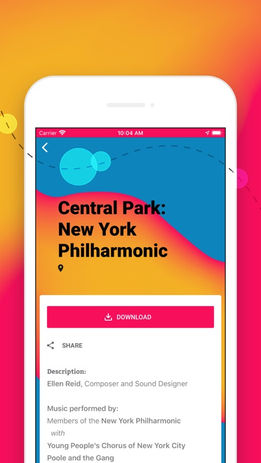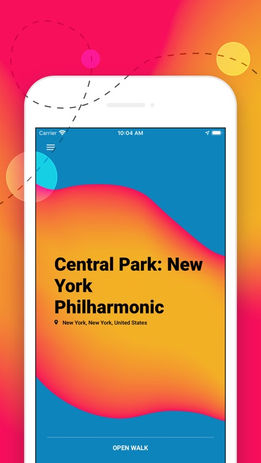
sound
soun
sou
so
s
s
so
sou
soun
sound
Research Compendium
Koh Qing Wen, Ariel
22302
BADC4D
nostalgia sound
“Today, all sounds belong to a continuous field of possibilities lying within the comprehensive dominion of music. Behold the new orchestra: the sonic universe!
And the musicians: anyone and anything that sounds!”
― R. Murray Schafer, The Soundscape:
Our Sonic Environment and the Tuning of the World

introduction
Why do people prefer to collect physical mediums for music or sound recordings?
Reel-to-reel tapes / Cassette Tapes / Long-Playing Albums / Vinyl Record Tapes
Do narratives about a person’s past affect their experience with sound?

Fig 1
We keep a collection of music albums or audio
recordings to keep the wonderful memories that we have about a piece of music or sound. Our recollection of past events and different cultural experiences affects the way we interact with sound individually. "The importance of sound as a medium for remembering and creating a sense of belonging has increased in recent years. Because of the use of audio technologies, we can record, celebrate and manage our memories easily" (Bijsterveld et al., ‘Introduction’).

Fig 2

Born in the digital age of streaming music, I found
that there was an increased number of people who wants a physical way of interacting with sound.
Fig 3
Analog Love
A documentary film that explains why our
Interaction with music is so meaningful to us and how we communicate through music. In this brief clip from the documentary, Henry Rollins talks about his personal experience with making Mixtapes and how we had less of everything in the past, so it makes the physical albums or tapes precious.
Fig 4

Rationale

Fig 5
Rationale
The practice of sound walking is a tool used for memory retrieval
Research Questions
How are memories created and remembered in the mind and felt within the body?
What happens to our perception of self, home, and knowing as we move through spaces and places of significance?

Fig 6
The practice of sound walking is a tool used for memory retrieval.
Research Questions
How are memories created and remembered in the mind and felt within the body?
What happens to our perception of "self" as we move through environments of significance to us?

Fig 5
I am interested in exploring the subject of how sound
can be a form of memory and nostalgia within the context of soundscape and audio diaries studies. "How we hear the past and revoke our acoustic memories as we move and act through the environment affects our interaction with the soundscape (Schine)." Everyone's experience with sound is different, as our interaction with sound is affected by our past and cultural differences. Past methods for recalling the past relied heavily on our sense of sight, visual cues such as photographs and personal objects like mementoes.
I wanted to research how we can make better use of
our other senses, such as hearing for better multi-sensory interaction.
Tools such as soundwalk are important tools for
memory retrieval, the physical act of moving our body through environments that are meaningful to us, helps us bring our past memories into the present, soundwalk helps us understand our environment better so we can better engage with them.

Fig 6

methodology
The composer R. Murray Schafer coined the word “soundscape,” to identify sounds that “describe a place, a sonic identity, a sonic memory, but always a sound that is pertinent to a place.”
Wagstaff, G. 2000
Soundscapes are compositions made of
combinations of distinct sounds that invoke a particular feeling or environment. We can create the sounds used in the soundscapes from field recordings, digital sounds or percussive and non-traditional instruments such as outdoor objects, voices and movements.
I first heard of the word soundscape from reading
"Sonic Interaction Design" by Karmen Franinovic and Stefania Serafin, "The Soundscape: Our Sonic Environment and the Tuning of the World" by R. Murray Schafer. Researching what soundscape is about made me interested in how sound can be used as a form of memory and nostalgia.
My main Readers for key terms and concepts.
Key Concepts
R. Murray Schafer
The person who popularised the term' soundscape'
was R. Murray Schafer, a Canadian composer and writer who brought the concept of the “soundscape” to widespread recognition and pioneered the field of acoustic ecology — the relationship between sound, people, and the environment.

Fig 11
Schizophonia
Schizophonia is another term also popularised by
Schaefer refers to when sound is separated from its original source.
The Schizophonic Scenery
I extracted the audio from "The Schizophonic
Scenery", a visual component of the project Monday Sounds. I found it interesting because in the video there is a calm view of a natural environment but we can hear the busy and chaotic environment of cars and people.

Fig 12
Soundwalk
A form of active participation in Soundscape. The
purpose of the soundwalk is to encourage the participant to listen discriminatively, and moreover, to make critical judgments about the sounds heard and their contribution to the balance or imbalance of the sonic environment.

Fig 13
Listen
Fig 14 shows clips from the short film "Listen" directed by David New for 2009
Governor General's Performing Arts Award. The clips show R. Murray Schafer talking about the key concept of my research "Soundscape".
Listen Carefully
R. Murray Schafer talks about how we should listen
carefully to our environment to hear sounds we rarely notice in our busy soundscape.
Use Our Senses
By listening carefully, our senses can be enhanced, as
designers, we should encourage people to use their senses to listen and look at things carefully.
Sound Recording
When there was no way of sound recording in the past,
people were more careful with the soundscape that they were living with since there were no methods of memory recording and retrieval.

case study 01: soundwalk
Ellen Reid Soundwalk
A note from composer Ellen Reid
“These are unprecedented times; we’re all experiencing the anxieties of living in an
uncertain world. We miss our communities, and we miss the very thing that makes our cities special: the people.
I hope SOUNDWALK will inspire us and make us feel connected to something
larger than ourselves. It serves as artistic nourishment - a place to recharge, reconnect, and re-energise.”
Ellen Reid SOUNDWALK is a GPS-enabled
application that uses music created by Pulitzer Prize-winning composer Ellen Reid to enhance the natural environment, SOUNDWALK is tailor made for each location to encourage calm reflection of the user. In this video, Reid talks about how she was inspired by public parks having layers of sound when she navigates through parks in the city.
Fig 15
Locations
New York, New York
Central Park
Los Angeles, California
San Francisco, California
Laguna Beach, California
Los Angeles, California
UCLA Campus
Athens, Greece
Knoxville, Tennessee
Saratoga Springs, New York
Application
Screenshots from the app
Fig 16
How to use the app
Fig 17
Application Walkthrough
Fig 18
Wellcome Mindscapes
Soundwalk is a socially distanced safe method for people to get out and interact with the
public parks as our lives have been affected by the Covi-19 pandemic. The Wellcome Mindscapes programme supports the use of soundwalk as a method of self-care and mindfulness. The Ellen Reid Soundwalk application has helped in the success of this project to encourage people to interact with nature more. Fig 19 shows clips that talk about the purpose of the programme.
Musical Themes
Ellen Reid talks about how she made use of the layout
of the park, to make her music fit with the suitable themes.
Current and Historical Events
The music created was inspired by events that
happened at the public parks. Ellen Reid wants visitors to be more aware of these events.
Mindscapes Project
Mitchell Silver, Commissioner, NYC Department of
Parks and Recreation shares how just being able to take a walk in the park is a great help for mental health.
Soundwalk
Using Soundwalk further enhances people's
interaction with public parks as it helps give you a way to take a break and reduce your stress.

guided soundwalk
There are many ways of using soundwalk. While researching, I found that guided
soundwalk were commonly used. In guided soundwalk user will go through the environment with a voice recording of a person who will guide the user through the soundwalk process.
The University of Illionis at
Urbana-Champaign
This video shows a wide variety of how the activity of soundwalk can be used. All the examples shown here were
created by University of Illinois students in MUS 243 - Introduction to Music Education Technology, under the instruction of Nick Jaworski. While listening to the examples I felt that the use of soundwalk as a guided tour was unique and helpful because for someone who is not used to the concept of soundwalk having a guided voice will help guide you in thinking more about the soundscape of the environment. Fig 2o shows two examples of the guided soundwalk.
Time and Objects Found
In this example, the recording guides users to think
about how much time they have spent in the location and to focus more on their surroundings. When asked to focus on a painting found in the space, the recording helps you imagine yourself being in the same space as the painting.
Finding a Person
I found this example of a soundwalk unique
because it made me feel like I was on a quest to find a missing girl while listening to a recording of her voice for clues. I feel like this can be used for a very interesting gameplay for interaction.

field recording
I am interested in exploring the interesting sounds that people collected for their field recordings
during the process of sound walking. Without sound, the environment will feel empty and the interaction we have with places of significance to us will not happen. As like I mentioned earlier, sound walk is an important tool in memory retrieval.
Playground soundscape

Fig 21
The audio was extracted from a YouTube video that
shows a soundwalk recording of kids playing and laughing with their parents at Dension Square. Without the sounds of the kids playing and laughter, the playground will feel empty because we do not see the interaction between the kids and their parents at the playground, which is usually filled with sounds of activity. Is a playground considered a playground without the sounds of the kids?

case study 02:
aUDIO DIARIES
Battle For Truth
In "Journeys in and Through Sound",
the authors mentioned the use of sound portraits open up a way where the experience of someone's voice could make us feel and hear the emotions of their feelings and emotional journey. With the South Sudanese Youths in Australia, the liberation arts project, Battle for Truth, made sound portraits by gathering sounds from relevant news sources. The final composition made use of sound effects to enhance the recordings so people will be more
aware of the the urgency of the issue.
The intensity of the words and sound in the sound
portraits might cause discomfort because it exposes forms of deafness for those in potions of privilege wherein in another case it might cause someone else to recall painful experiences of racism and discrimination. In this example, we can see how this reflexive process of sound portraits react differently based on someone's personal experiences.

Fig 22
This piece showcases how African Australians are being
misrepresented in the media. The sound portrait was created by combining a range of voices of African Australian women from interviews and audio samples from the "Breaking News” created by New Change. Fig 23 shows an embedded SoundCloud audio of the piece.

case study 03:
pRIMARY AND SECONDARY RESEARCH
Pasir Ris Park

I recorded sound samples at different locations
in Pasir Ris Park. I used the Tascam DR-100MKIII to record my audio. Some locations were the beach, playground, and the mangrove forest.
Fig 24
Recordings

Beach
I recorded samples of the waves in windy conditions
so the sound of the waves' current is quick and strong. As you go towards the rocky side of the beach, the waves will crash into the rocks nearby, making the sound louder.

Mangrove Forest
One unique trait of Pasir Ris Park is the Mangrove
Boardwalk where you can get close to creatures and plants in the mangrove forest. The soundscape changes depending on the timing, as more creatures will appear later in the day. I recorded two samples of bird sounds during my walk-in Pasir Ris Park in the morning.

Playground
It was nice to see families at the BBQ pits and
playgrounds as I really missed hearing the kid's laughter during the pandemic. The park was filled with families, which was nice to see.

References
Images, sound and videos
AppAdvice Staff. ‘Fig 16: Ellen Reid SOUNDWALK App Screenshots’. AppAdvice, 29 Aug. 2021, appadvice.com/app/ellen-reid-soundwalk/1528147837.
Baker, A. M. ‘Fig 22: Young African Australian Women’. Facebook, 9 June 2018, www.facebook.com/plugins/post.php?href=https%3A%2F%2Fwww.facebook.com%2Ftellingtalesfestival%2Fposts%2F1776312235784061&show.
Baker, A. M. ‘Fig 23: Battle for Truth’. SoundCloud, soundcloud.com/resonantvoices/battle-for-truth. Accessed 24 Apr. 2022.
Bijsterveld, et al. Fig 9: Sound Souvenirs : Audio Technologies, Memory and Cultural Practices. Amsterdam University Press, 2011.
Channel, The Violin. ‘Fig 11: R. Murray Schafer’. The World’s Leading Classical Music News Source. Est 2009., 1 Sept. 2021, theviolinchannel.com/composer-r-murray-schafer-has-died-aged-88.
Collins, Karen. Fig 7: Playing with Sound: A Theory of Interacting with Sound and Music in Video Games (The MIT Press). Illustrated, The MIT Press, 2013.
‘Fig 1: Animated Clip of a Vinyl Record’. Wix, www.wix.com. Accessed 21 Mar. 2022.
‘Fig 2: Vinyl Record Collection’. Wix, www.wix.com. Accessed 21 Mar. 2022.
‘Fig 3: Animated Clip of Man Listening to Music’. Wix-Hp-New-Header1, www.wix.com. Accessed 21 Mar. 2022.
‘Fig 14: R. Murray Schafer: Listen’. YouTube, uploaded by NFB, 4 Apr. 2017, www.youtube.com/watch?v=rOlxuXHWfHw&ab_channel=NFB.
‘Fig 18: Ellen Reid SOUNDWALK’. YouTube, uploaded by xue bai, 10 Nov. 2020, www.youtube.com/watch?v=R7ZEia2nvuA&ab_channel=xuebai.
‘Fig 19: Ellen Reid: SOUNDWALK | Wellcome’. YouTube, uploaded by Wellcome Trust, 24 May 2021, www.youtube.com/watch?v=VKXffWUXits&ab_channel=WellcomeTrust.
‘Fig 20: Soundwalk Examples’. YouTube, uploaded by LeadingNotesMagazine, 6 Feb. 2012, www.youtube.com/watch?v=A5zOjnakDKA.
‘Fig 21: Soundwalk - Kids Playing and Laughing at Denison Square’. YouTube, uploaded by Yue Chen, 31 May 2016, www.youtube.com/watch?v=wMLqluOgdOs&ab_channel=YueChen.
‘Fig 24: Tascam DR -100MKIII’. Tascam, transom.org/2016/tascam-dr-100mkii-2. Accessed 24 Apr. 2022.
Franinovic, Karmen, and Stefania Serafin. Fig 8: Sonic Interaction Design (The MIT Press). Illustrated, The MIT Press, 2013.
Giphy. ‘Fig 5: Cowboy Bebop Radio GIF’. GIPHY, 24 July 2019, giphy.com/gifs/XxHVJxuogNP32.
Hartlieb, Florian. ‘Schizophonic Scenery #1’. YouTube, uploaded by Fig 12: Schizophonic Scenery #1, 2 Jan. 2013, www.youtube.com/watch?v=18Pos-NlanQ&feature=youtu.be.
‘Home Page Image: Phonograph Record’. Wix, www.wix.com. Accessed 16 Mar. 2022.
Hume, Alexander. ‘Fig 13: Man Doing a Field Recording’. Dance Music NW, 23 Feb. 2018, www.dancemusicnw.com/field-recording-101-audio-outside.
Projects, Eclipse. ‘Ellen Reid SOUNDWALK - Public Parks’. Vimeo, uploaded by Fig 15: Ellen Reid SOUNDWALK - Public Parks, 22 Mar. 2022, vimeo.com/525797294?embedded=true&source=video_title&owner=122625017.
Projects, Eclipse. ‘Fig 17: How to Use the Ellen Reid SOUNDWALK App’. Vimeo, uploaded by Eclipse Projects, 22 Mar. 2022, vimeo.com/513976574?embedded=true&source=video_title&owner=122625017.
Rollins, Henry. ‘Fig 4: Analog Love Documentary Clip 8 - “Sonic Environment”’. YouTube, uploaded by Robert Galluzzo, 14 Oct. 2021, www.youtube.com/watch?v=V_hmlc44i64&ab_channel=CNA.
Schafer, Murray. Fig 10: The Soundscape. Original ed., Destiny Books, 1993.
‘Section Breaks Banners’. Wix, www.wix.com. Accessed 6 Apr. 2022.
Tedford, Matthew Harrison, and Matthew Harrison Tedford. ‘Fig 6: Ellen Reid SOUNDWALK’. Bay Nature, baynature.org/article/slow-down-and-open-up-on-a-soundwalk-through-golden-gate-park. Accessed 22 Mar. 2022.
Research
Augoyard, Jean-François, and Henri Torgue. ‘Introduction’. Sonic Experience: A Guide to Everyday Sounds, Illustrated, McGill-Queen’s University Press, 2006, pp. 3–18.
Baker, Alison, and Todd Anderson-Kunert. ‘Journeys in and through Sound’. Qualitative Research Journal, vol. 19, no. 1, 2019, pp. 5–35. Crossref, https://doi.org/10.1108/qrj-02-2019-101.
Bijsterveld, et al. ‘Introduction’. Sound Souvenirs : Audio Technologies, Memory and Cultural Practices, Amsterdam University Press, 2011, pp. 11–22.
Bijsterveld, et al. ‘The Auditory Nostalgia of iPod Culture’. Sound Souvenirs : Audio Technologies, Memory and Cultural Practices, Amsterdam University Press, 2011, pp. 83–93.
‘Ellen Soundwalk’. Ellen Soundwalk, www.ellenreidsoundwalk.com. Accessed 22 Mar. 2022.
Franinovic, Karmen, and Stefania Serafin. ‘Pedagogical Approaches and Methods’. Sonic Interaction Design (The MIT Press), Illustrated, The MIT Press, 2013, pp. 125–50.
‘Pasir Ris Park’. National Parks Board, www.nparks.gov.sg/gardens-parks-and-nature/parks-and-nature-reserves/pasir-ris-park. Accessed 25 Apr. 2022.
Schafer, Murray. ‘Introduction’. The Soundscape: Our Sonic Environment and the Tuning of the World, Original ed., Destiny Books, 1993, pp. 3–12.
Schine, Jennifer. ‘MOVEMENT, MEMORY and THE SENSES IN SOUNDSCAPE STUDIES – Sensory Studies’. Sensory Studies, www.sensorystudies.org/sensorial-investigations/movement-memory-the-senses-in-soundscape-studies. Accessed 22 Mar. 2022.
‘Soundwalk’. Handbook for Acoustic Ecology, www.sfu.ca/sonic-studio-webdav/handbook/Soundwalk.html. Accessed 15 Mar. 2022.
